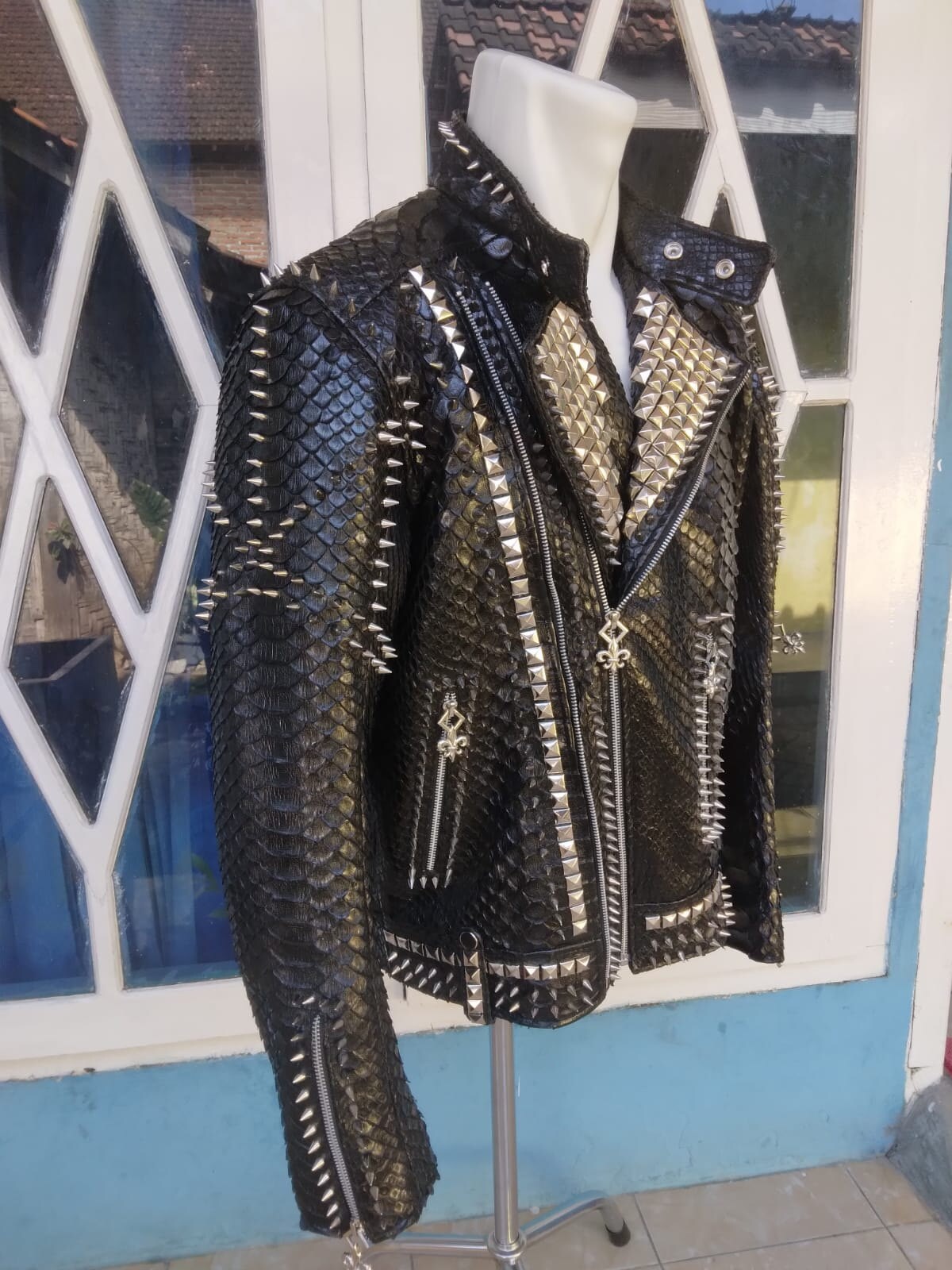There are few kinds of leather that stand out as much as snakeskin. The slick, scaly shimmer of our reptilian friend emanates a shadowy coolness, only concealing its voracious primal nature by a distinctive serpentine cunning. There is both power and subtlety to be found in this most elegant of leathers, and a clandestine air of authority. If you have been looking for a leather to give you the respect you deserve, look no further. While snakeskin leather is certainly exotic, it is also somewhat fragile if treated improperly. The skin is by nature highly absorbent, and will take in and release moisture around it more quickly than most leather types. Due to this characteristic, standard leather products like alcohol, oil, and acetone can actually ruin your snakeskin leather care efforts. Weather, extreme temperatures, spills and dusty floors can also be hazardous to deal with – if the forecaster tells you it is going to rain or snow tomorrow, do not wear your snakeskin shoes out of the house. Untreated weather or environment effects may lead to dye runs, staining or water damage. Don’t leave it in front of radiators or anything with lots of heat, as this will cause the snakeskin leather to dry out and crack, something potentially impossible to repair, and will give the snake a shriveled and weathered appearance. This isn’t to say snakeskin leather is not durable. On the contrary, it holds together very well. But unlike Godric Gryffindor’s sword from Harry Potter, it will not take in only that which makes it stronger. Come to think of it, Godric Gryffindor’s sword slew a snake, didn’t it?
Don’t Tip the Scales
If your snakeskin leather does get wet, don’t worry! Simply dry the water off with a dry, white cotton or flannel cloth. If you don’t have one of these handy, using tissue to gently blot up the moisture will work. Also, always wipe in the direction of the scales. This is one of the single-most important things to know for proper snakeskin leather care. If you brush opposite the scales’ direction, you may end up lifting the scales and permanent damage could result. When you have dried your snakeskin leather as much as you can with a cloth, allow the item to dry naturally in a cool place indoors, away from direct heat and sunlight. You’ll want to store snakeskin leather in similar fashions. Cool, dry places away from heat and sunlight are ideal, and keep the place clean. Dust bags and boxes work particularly well. Your snakeskin will, of course, need to be cleaned and conditioned routinely, usually about two to three times a year. Snakeskin is an exotic leather, and will therefore need different conditioning methods than ordinary leather. Do not use commercial cleaning or conditioning products. The consistency and pH levels of these solutions are usually too harsh for snakeskin leather care. You can read about pH levels and leather in our blog “Common Leather Care Mistakes.” Instead, take a soft cloth and very lightly dampen it. Although snake scales are naturally water resistant, too much water can sink beneath the scales, causing the membrane underneath to dry and peel the scales off. So, keep things moderate. Next, gently wipe your damp cloth in the direction of the scales. You can determine the direction by feeling the skin with you finger in a straight line. If the leather feels coarse and rough, you’re going the wrong way; the natural flow of the scales with feel smooth to the touch. After you have determined the scale’s coarse and spread conditioner evenly and thinly over the surface, use a dry cloth to pick up any remaining moisture. Again, wipe in the direction of the scales. Always wipe in the direction of the scales. As you are working with scales, you may find you cloth will not be able to get everything. In this case, try gently using a bristled brush to get rid of any dirt embedded between the scales. Sable brushes are particularly good at this, but use them with care.
Just Snake Along
After cleaning and drying your snakeskin leather, you’ll also want to condition it. As before, veer away from commercial cleaners and products used for smooth leather. These conditioners will often leave residue that will build up around the base of scales and cause them to crack or fall off, not to mention potentially discolor them. Instead, you’ll want to use a conditioning recipe specifically formulated for reptile and exotic leather. Foamy products work better than liquid and cream, more easily getting into cracks and crevices. As a rule of thumb, you should also test any conditioners on your leather in a discreet area and observe their results after drying before applying them to the entire item. Use a soft, dry, white cloth for this, and make sure little or no color is coming off on it, or any other visible side effects. If you are confident you’ve got the right conditioner, gently apply it evenly over the surface in thin layers. You know the direction. After you have covered the surface of the material, wait about fifteen minutes for the product to dry and buff it off with a cloth. Snakeskin with a matte finish may not need to be polished after. When you’re working with a large leather item like a handbag or suitcase, finish one side before starting another, and give it time to rest after a couple sides to dry thoroughly and evenly. Additionally, you may want to apply a water protectant to your snakeskin leather to defend it from water exposure. Water protectants specifically designed for reptiles work best, and test before use.

